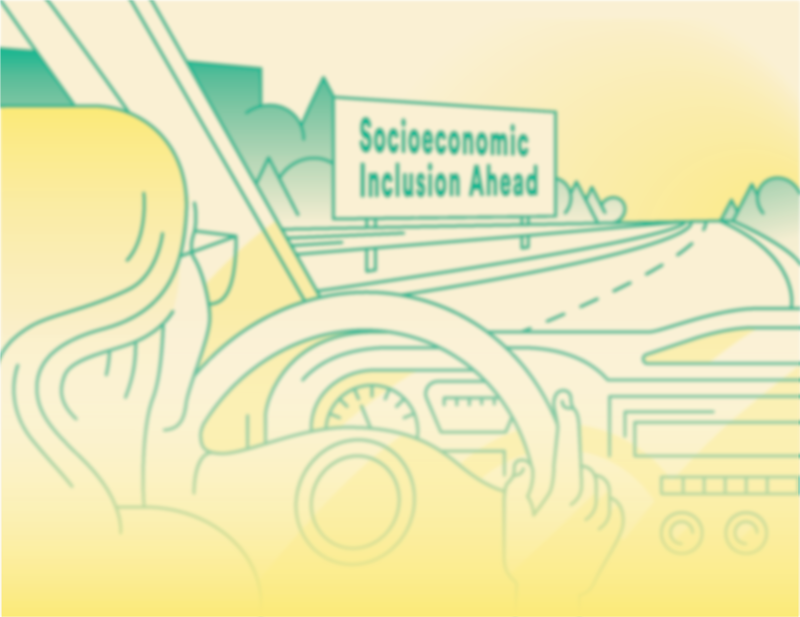Those of us who have travelled alongside young people transitioning out of homelessness know how difficult this journey can be. Once housed, they must face the colossal task of pressing forward in the face of monumental social and economic inequities.
Young people experiencing and exiting homelessness are presented with very different life chances than young people who have never experienced homelessness. The reasons for this are complex and interconnected; most can be traced back to the reasons they experienced a loss of a stable home in the first place. Consequently, many young people who have exited homelessness continue to experience socioeconomic exclusion and housing instability.
In The Roadmap for the Prevention of Youth Homelessness, social inclusion is identified as a key feature of housing stabilization. In other words, if we want to help young people exiting homelessness increase their chances of staying housed, we need to address intangible factors such as their experiences of exclusion and the impact this has on their identity (self-concept) alongside tangible factors such as affordable housing and living wage jobs.

"My main takeaway is that I am the master of my own future. I feel lots more in control. I’m in the driver’s seat." - Nayah, participant
The Intervention
The overall aim of this research was to test whether an intervention focused on identity could improve the socioeconomic inclusion of young people who had exited homelessness.
The intervention was designed and carried out by DK Leadership – an established leadership and coaching centre in Toronto, Canada. Our research team also collaborated with Covenant House Toronto – Canada’s largest agency serving youth who have experienced or are experiencing homelessness.
Nineteen young people (aged 18 – 26) who had transitioned out of homelessness within the past three years participated in a weekly six session program focused on enhancing identity-based assets such as a sense of purpose and control, self-efficacy and self-esteem (identity capital). The program was carried out at DK Leadership headquarters – a location not associated with homelessness – which was intentional, given previous research has identified that supports located in places like homeless shelters can be well-meaning but stigmatizing.
We enrolled two groups of young people in the study. Group One (eight young people) took the program first followed by Group Two (eleven young people) three months later. We collected two types of data: quantitative (numerical) and qualitative (stories). When these types of data are combined, they create a synergistic effect, allowing researchers to gain a more nuanced understanding of how and why interventions work.
Quantitative Findings
Quantitative data was collected using questionnaires we believe capture important aspects of socioeconomic inclusion: self-esteem, community integration, social connectedness, and hope. We analysed the questionnaires using a t-test for statistical significance (P < .05) and a Cohen’s d test for substantive significance (magnitude of effect). We also asked about income, education, and employment. This data was collected at baseline (before the intervention), immediately post-intervention, and then every three months for nine months post-intervention.
Highlights of our quantitative findings include:
- Statistically significant improvements and large to very large positive effect size improvements in self-esteem and physical community integration in Group One (immediately post-intervention) compared to Group Two (had not begun the intervention)
- Statistically significant improvements and moderate effect size improvements compared to baseline in self-esteem and hopelessness six- and nine-months post-intervention (combined group scores)
- Small to moderate effect size improvements compared to baseline in self-esteem, physical community integration, and hopelessness at all time points (combined group scores)
Compared to baseline, three young people had completed secondary education and three more were enrolled in post-secondary education nine-months post-intervention. None of the young people experienced homelessness during the study. While we cannot say these findings are due to the intervention, it was heartening to see these positive achievements.
Qualitative Findings
We took the DK Leadership program with both groups of young people so we could experience the program with them. We also conducted focus groups with each group every three months for nine-months post-intervention. Two major themes came from the analysis of the focus group discussions:
1. Vision for Life
- The program seemed to reaffirm the young peoples’ potential. Many shared how experiences of homelessness can undermine confidence. Several discussed how they had low program expectations, anticipating a “homelessness” or “mental health” program.
- Participants created a vision board on the first day of the program and many kept this nearby as inspiration even nine-months post-intervention.
- Young people were very enthusiastic about attending a program in a beautiful space and found the atmosphere inspiring.
- Several participants spoke about (re)gaining a sense of control and being in the “driver’s seat” of life.
- Participants learned to move from “positive fantasizing” (e.g., winning the lottery as a way to get ahead) to setting and achieving tangible goals.
2. Reconstructing Identity
- Young people were encouraged to see their past as an asset rather than a liability. They were told that business leaders today are looking for young people who are tenacious and gritty – qualities often acquired by those who have persevered through adversity.
- Many shared how they were gaining the confidence to take care of themselves as opposed to relying on others (often social service providers) for support.
- Participants created a daily schedule during the program, and many spoke about the importance of this even nine-months post-intervention. Importantly, they explained that creating and sticking to a daily schedule is much easier after you have a vision for your life.
- Youth appreciated the normalizing of strategies they needed to learn and spoke of the importance of learning new skills “ to have a better life” vs. “to get better.” In other words, they were aware they were learning skills everyone in society needs – not just those who have experienced homelessness.
Practice Implications
- Ensure homelessness prevention strategies focus on intangible factors like identity. Do an identity capital check-in on youth transitioning away from homelessness – asses their sense of purpose and control, self-efficacy and self-esteem.
- Identity-informed care is trauma-informed care – both highlight the inherent value of gaining an internal sense of control and mastery to heal and move forward.
- Many young people exiting homelessness need help with goal setting and time management – consider adding an occupational therapist to the team to assist youth with how to effectively occupy their time.
- Consider more collaborations outside the homelessness sector – potentially less stigmatizing and promotes societal integration.
Conclusion
Given this is a small study in a specific context these findings must be interpreted with caution. Still, we believe an intervention targeting identity capital holds promise as a way of facilitating housing stability and socioeconomic inclusion. Future work could offer a similar program with larger numbers of young people in both urban and rural locations.
--
This post is part of our #CAEH19 blog series which highlights research on preventing and ending homelessness that is being presented at the 2019 National Conference on Ending Homelessness, Nov 4-6 in Edmonton, AB. Learn more about Naomi's work through her presentation within the Beyond Housing – Changing the Trajectory session on Wednesday, November 6th at 10am.


